Table of Contents
See also the “Jack and Jill” buttons on the Children and Babies page.
Norris and Spiers
From around 1936 until it was declared insolvent in May 1939, Reginald Charles Norris and John Henry Spiers traded as Norris and Spiers, “manufacturers of buttons, buckles and casein products” from a factory in City Road, and then from Mary Street, Surry Hills, Sydney.

Dun’s Gazette, 20th January 1936.
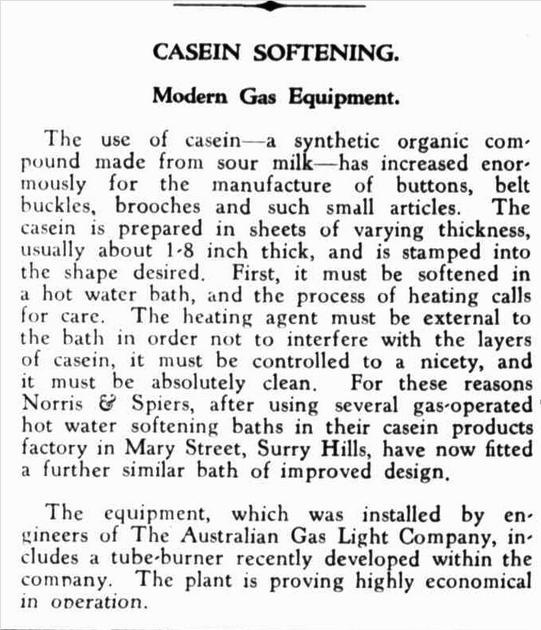
Construction (Sydney), 5th October 1938 page 5.
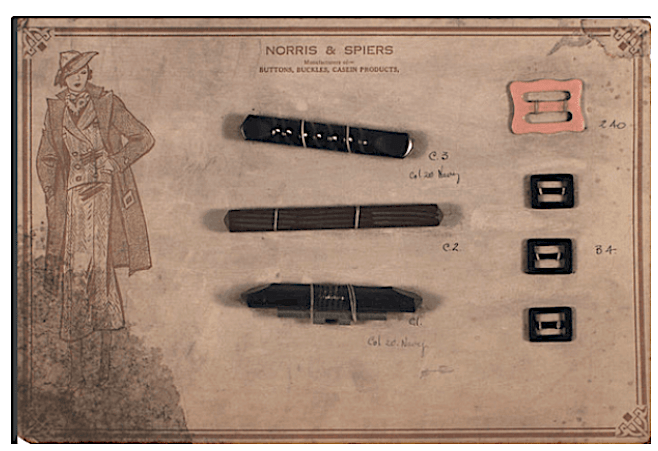
Museum Victoria, item no. 890794
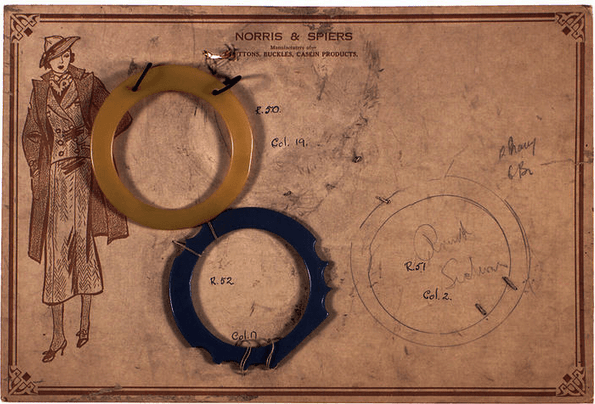
Museum Victoria: Item #259617
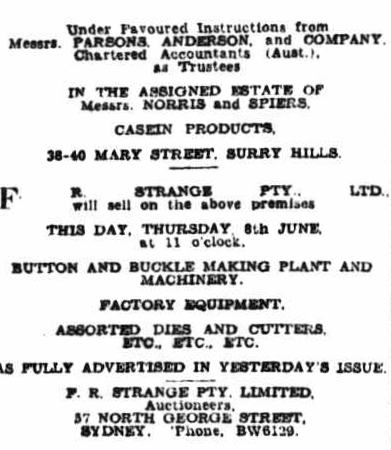
The Sydney Morning Herald, 8th June 1939 page 7.
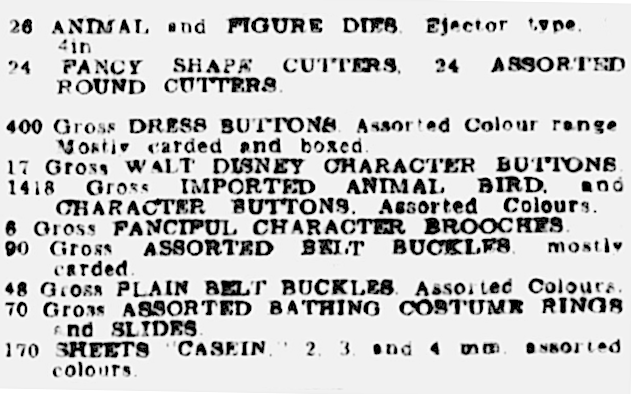
The Sydney Morning Herald, 7th June 1939 page 8.
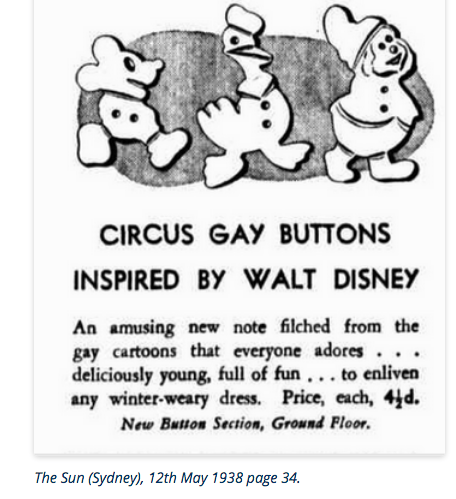
John Spiers (1915-1975) may have continued in button manufacturing and/or wholesaling, as a company called “Haik & Spiers” (later H & S Jewellery) existed from 1940 to at least 1961 as button, buckle and fancy goods wholesalers in George Street, Sydney. He was described as a manufacturer and importer.
Rex Buttons
According to the Rex Agencies web page, “Rex Buttons” began in Victoria in 1950, however newspaper advertising shows it actually started in 1940 in High Street, Armadale.

The Age, 30th October 1940 page 4.
They made buttons, accessories, ornaments and toys and advertised their spraying and lacquering services.
Reginald Charles Norris applied for registration of designs for buttons, dress accessories and for brooches from 1941 to 1949. Presumably he sold some of these through his firms ‘Norris Accessories’ (registered in November 1942) and ‘Rex C. Norris’. These two firms were combined in July 1946 as ‘Rex C. Norris Pty. Ltd.’ which was was described as a ‘fancy jewellery warehouse’. In 1950 (under the name Rex Charles Norris) he applied for registration of designs for buttons and fancy buttons (the name Rex is a diminutive version of Reginald).


Sydney Morning Herald, 1st September 1947 page 16.
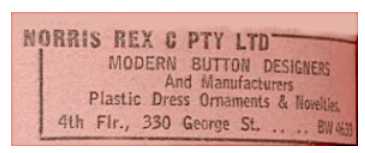
The web site claimed that “over the decades (they) grew to be the second largest button and buckle maker in Australia” (presumably behind Beutron). Rex C. Norris Pty. Ltd. became Rex-Norris Trading Pty. Ltd. some time after 1964 until 1977. The business then became Rex Agencies (Australia), then in 2003 Selnit-Rex Australia, run by Jeffrey Charles Bird. Mr Bird died in 2012. The company is still selling haberdashery today: see https://www.selnitrexaust.com/
Who was Rex C. Norris?
Reginald (Rex) Nathan Charles Wylie Norris was born in 1903 in Castlemaine, Victoria. In 1925 he is listed in the electoral rolls as living in Prahran employed as a labourer. In 1928 he and his wife Jeanie, are living in Toorak, and he is now a railway employee. By 1930 he has moved to Randwick East, Sydney, and is listed as working as a ‘specialty artist’. In 1936 he is listed as a manufacturer, and by 1943 a company director. On the passenger list of the ship ‘Strathnaver’ in 1951 leaving London bound for Sydney are listed Reginald Charles, DOB 19 July 1903, Importer, and his wife Jeanie and daughter Diana. He is last listed in the electoral rolls as a merchant in 1963. Quite a journey from labourer and railway employee to become a designer, company director and importer. He died in 1969.
Cards
Some cards were marked “Distributed by Rex C. Norris” so may have been made by someone else, others are not. Perhaps those examples were actually made by Rex Buttons? it is, of course, possible that all the buttons were made by Rex (perhaps excepting the metal examples) and that the only difference is in the printing of the cards.
Marked as “Distributed by”
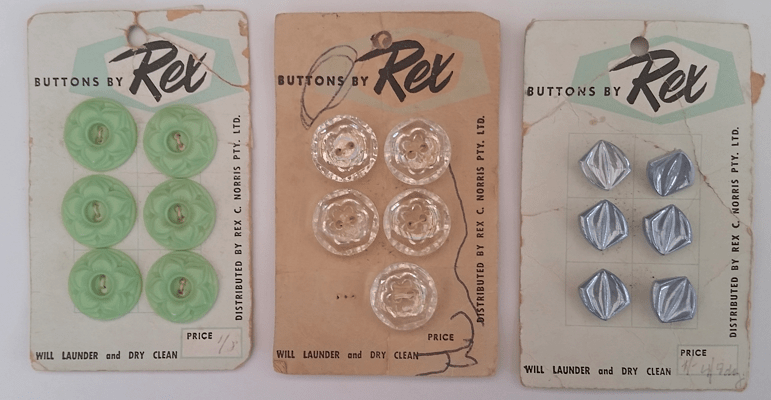
The design of the green buttons is found on Cygnet branded buttons.
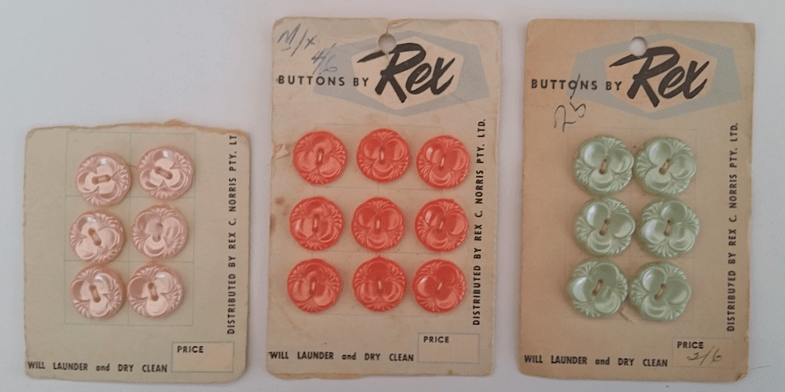
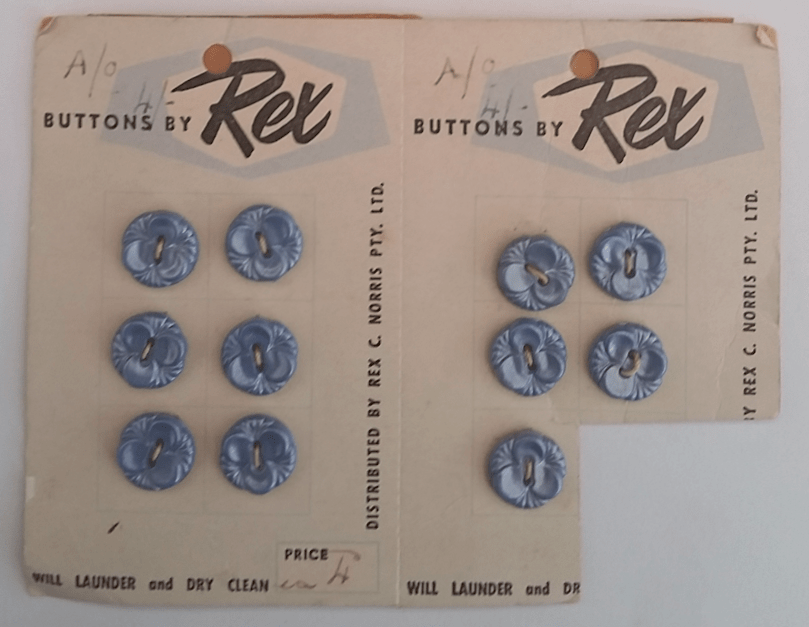
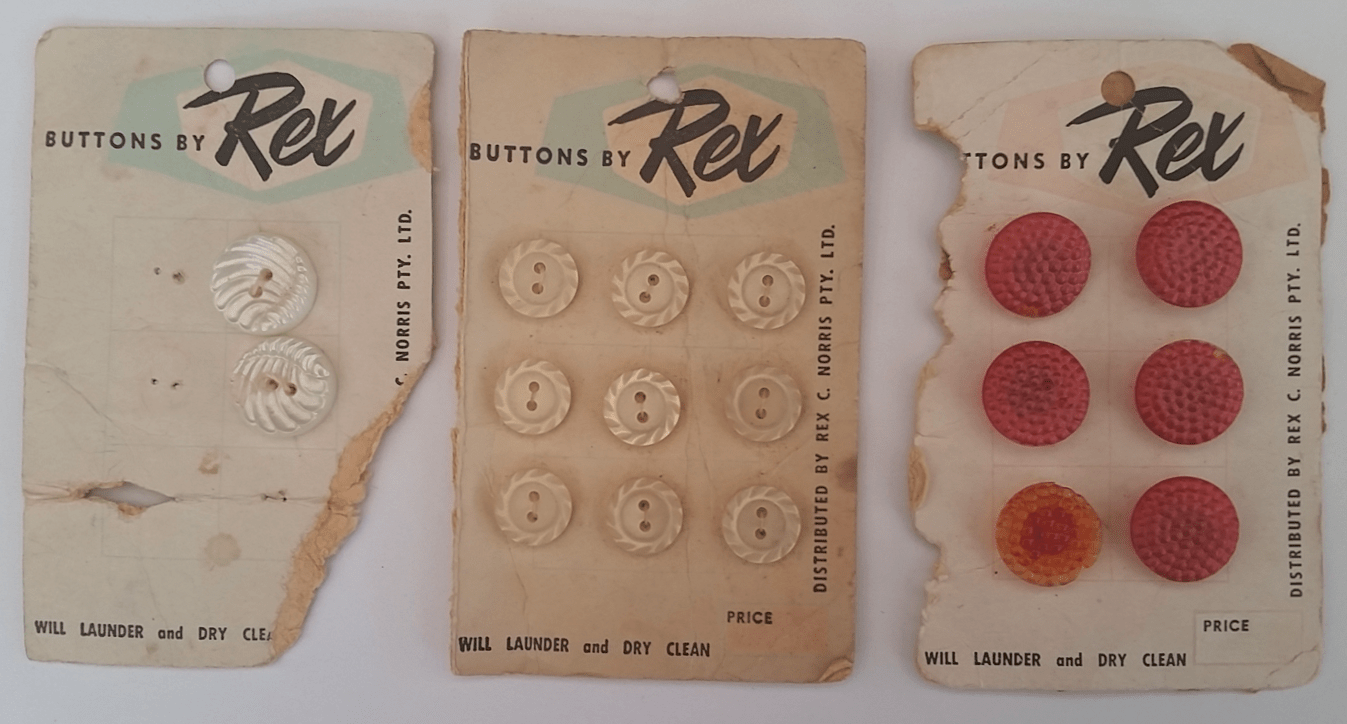
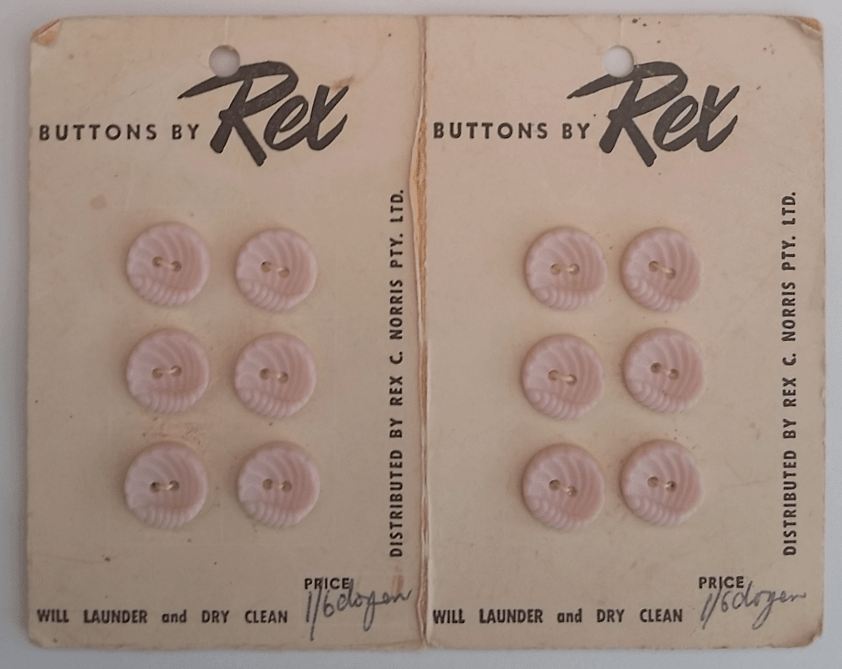
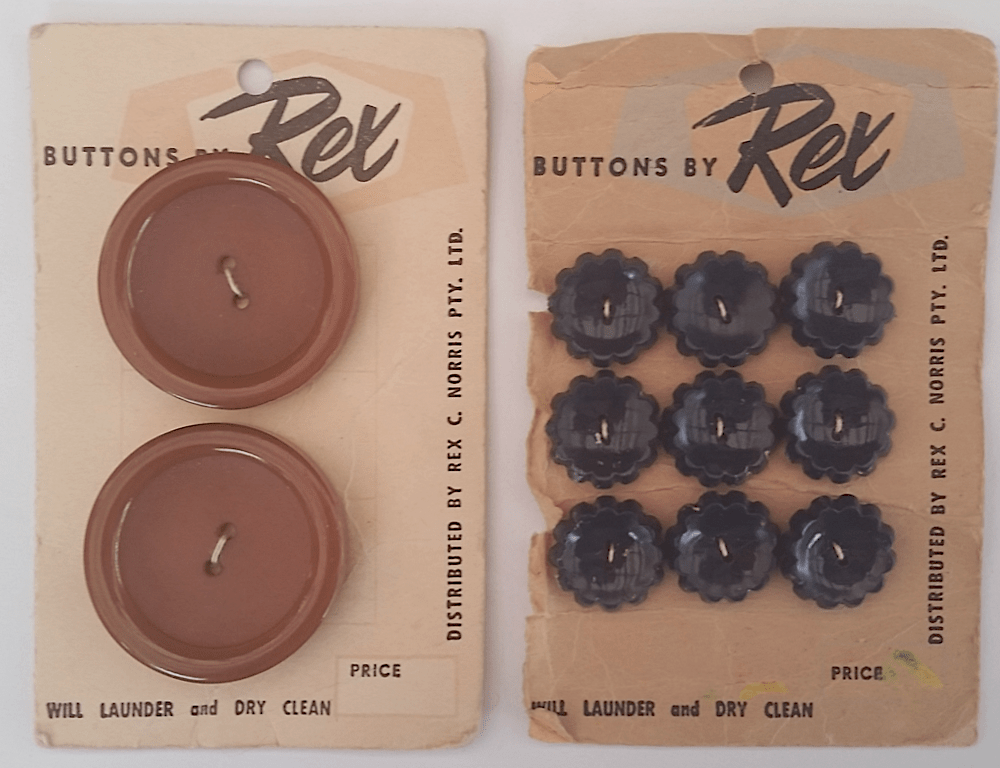
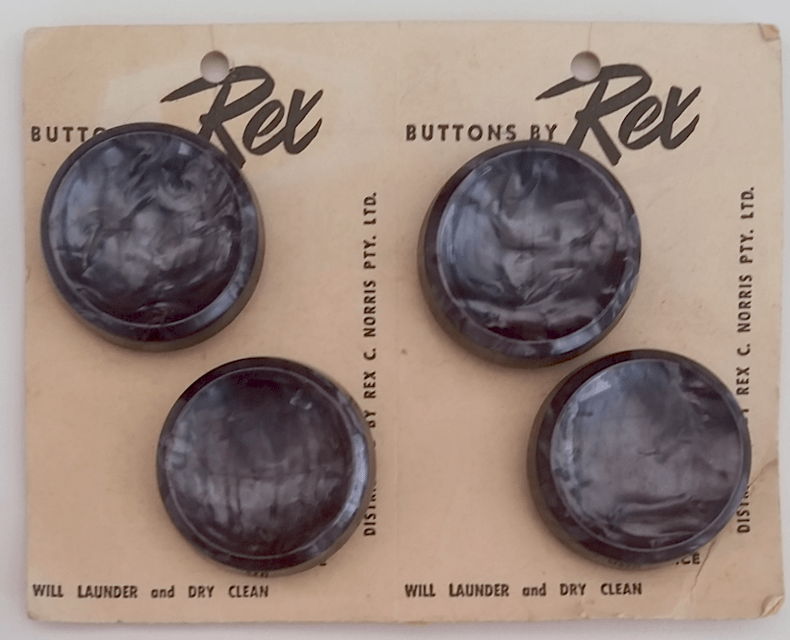
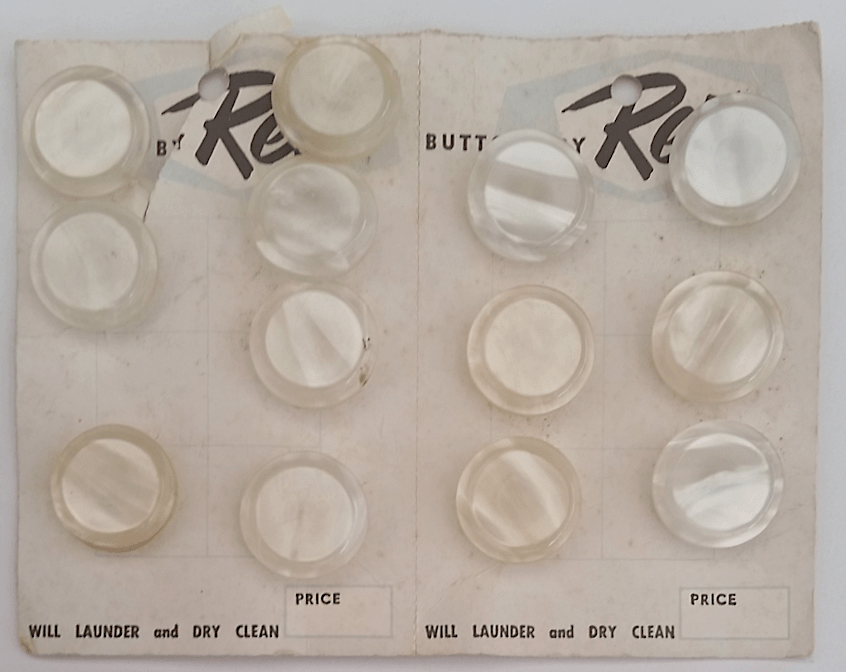
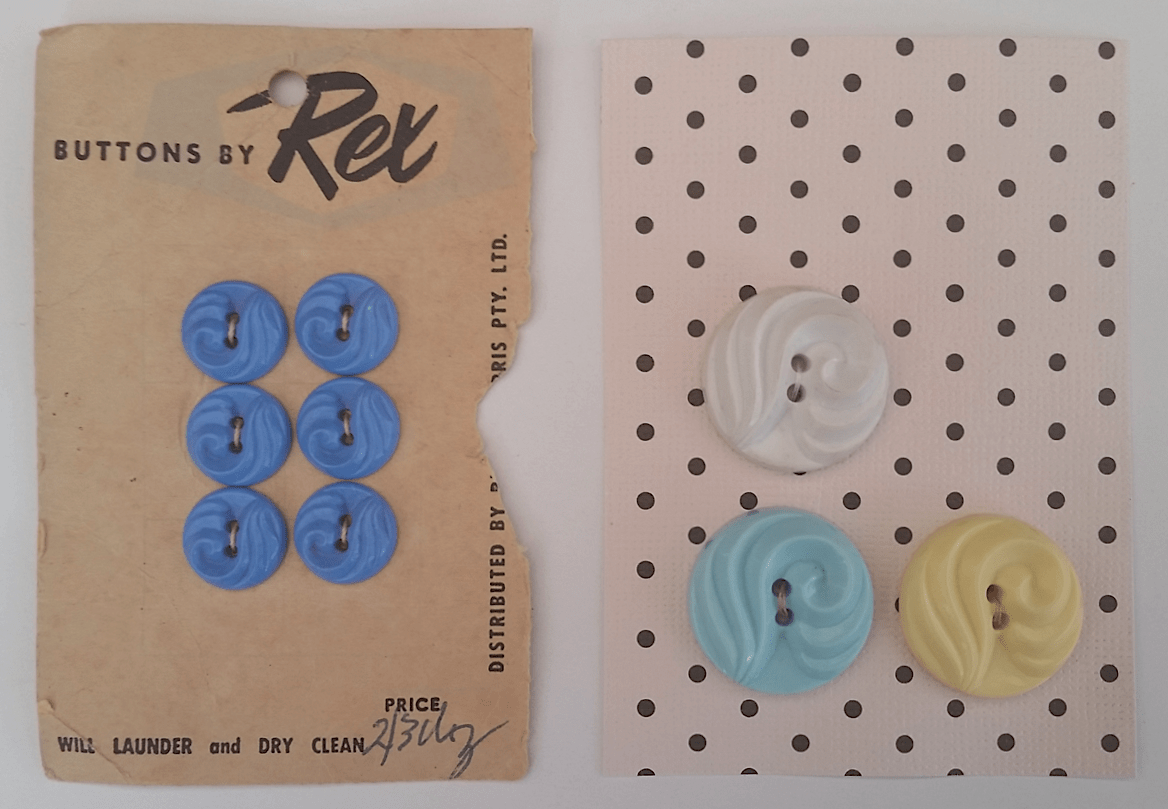
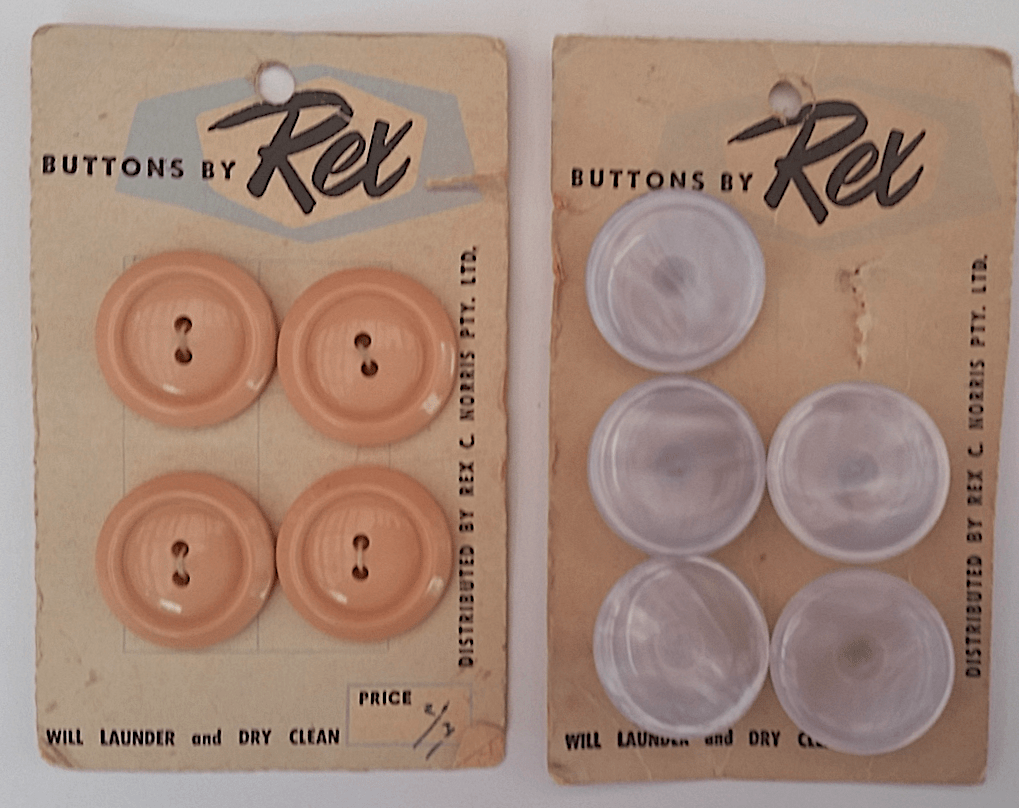
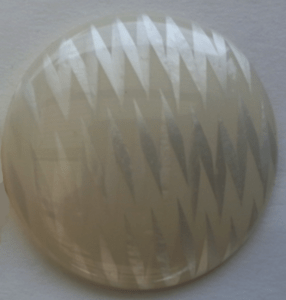
Not marked as “distributed by”
These date from just before, to just after, the decimalisation f prices in 1966. Some are marked with the dual pricing.
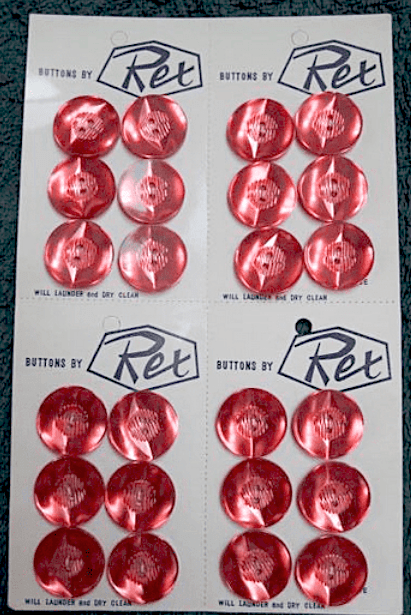
This shows how the cards were printed in sets of four, with perforations to separate them.
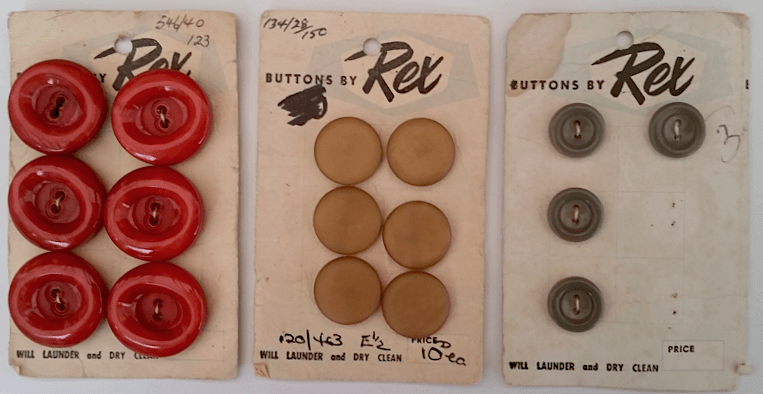
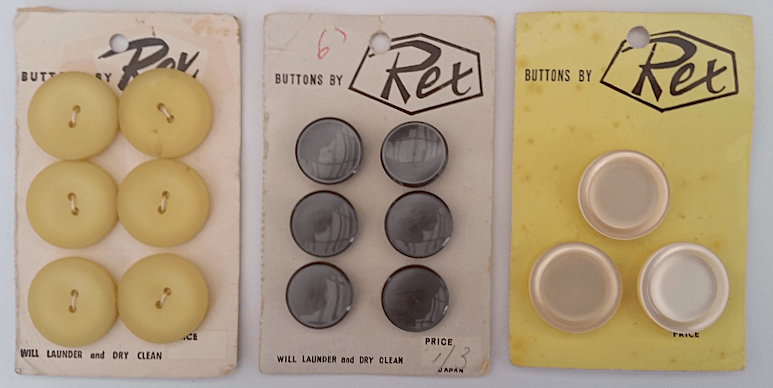
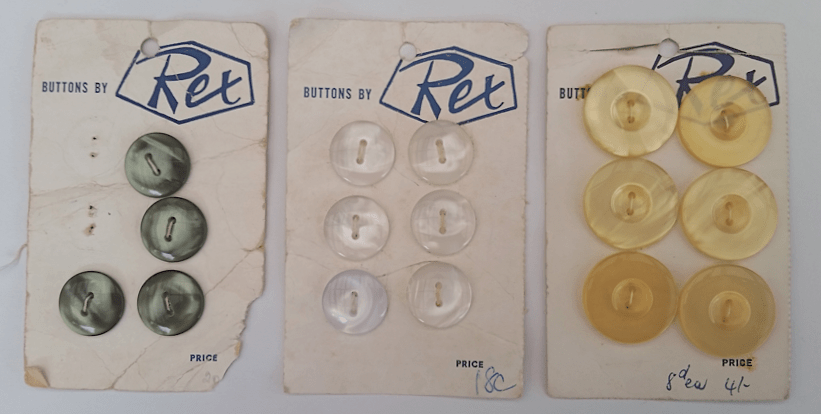
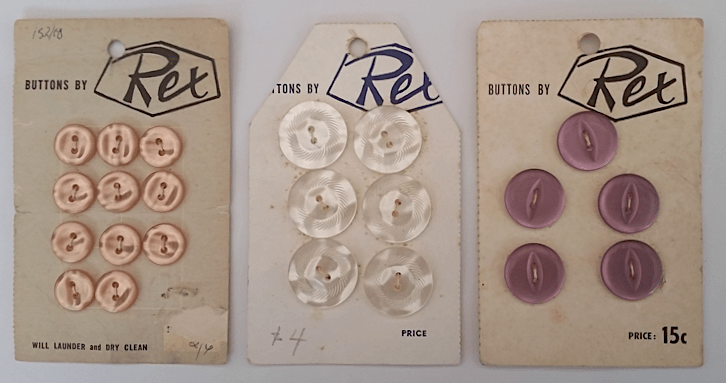
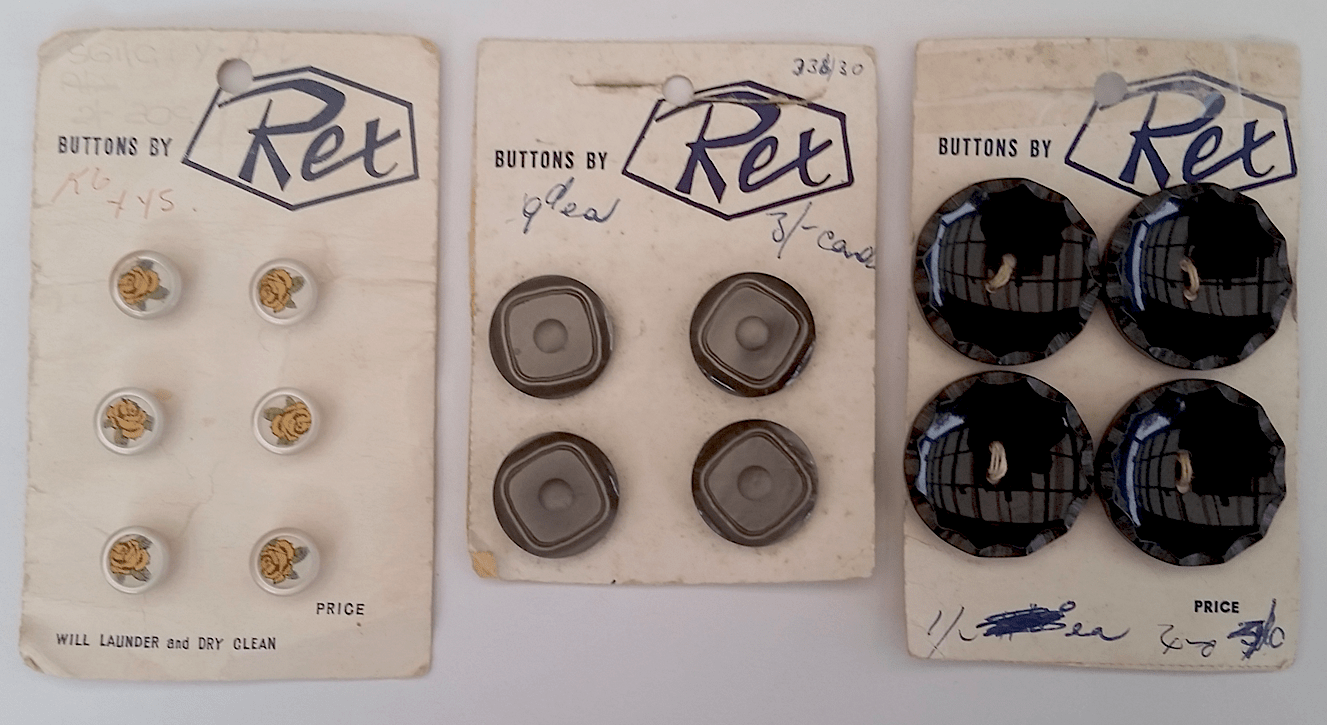
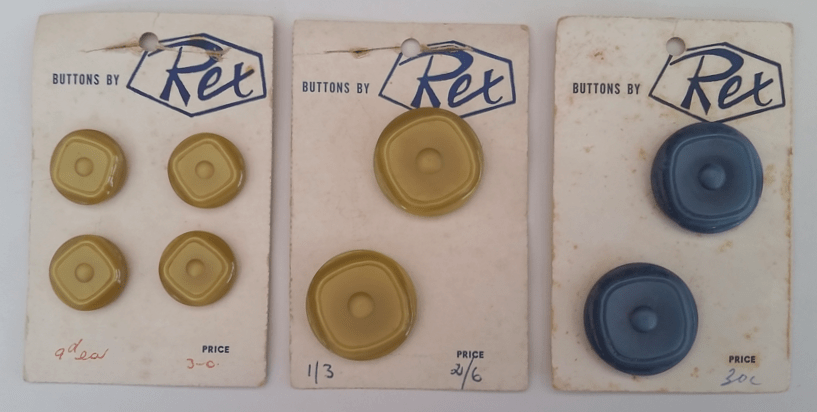
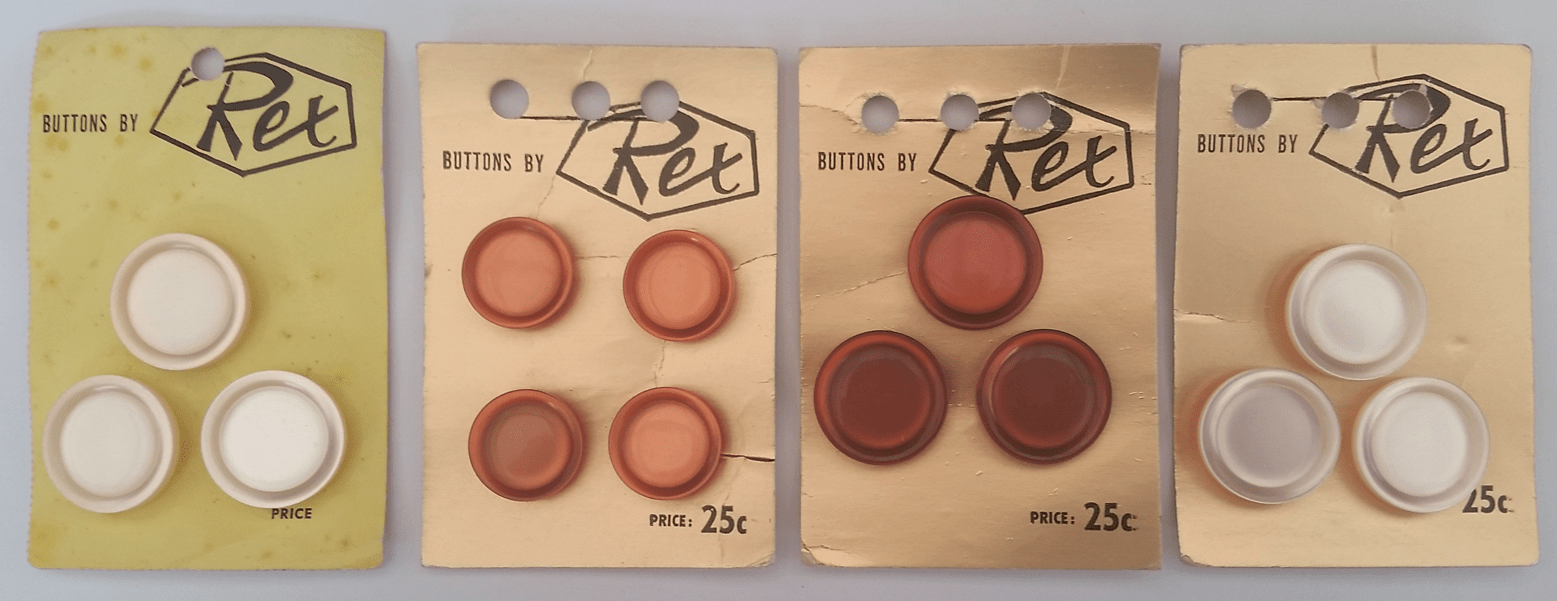
Sample cards
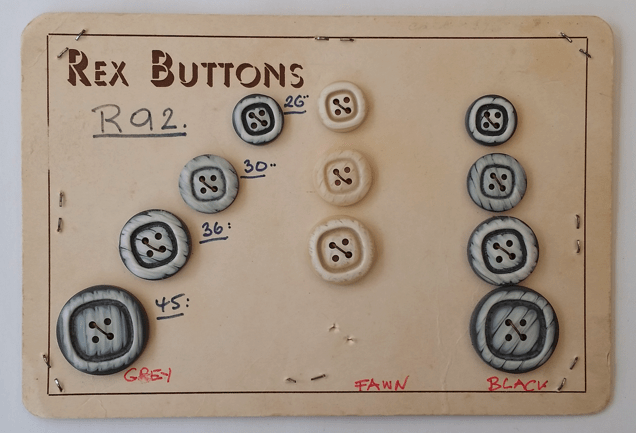
Exclusive Buttons & Cameos of Fashion
For unknown reasons, Rex also distributed these so branded buttons. “Cameos” were advertised from 1949-1953.
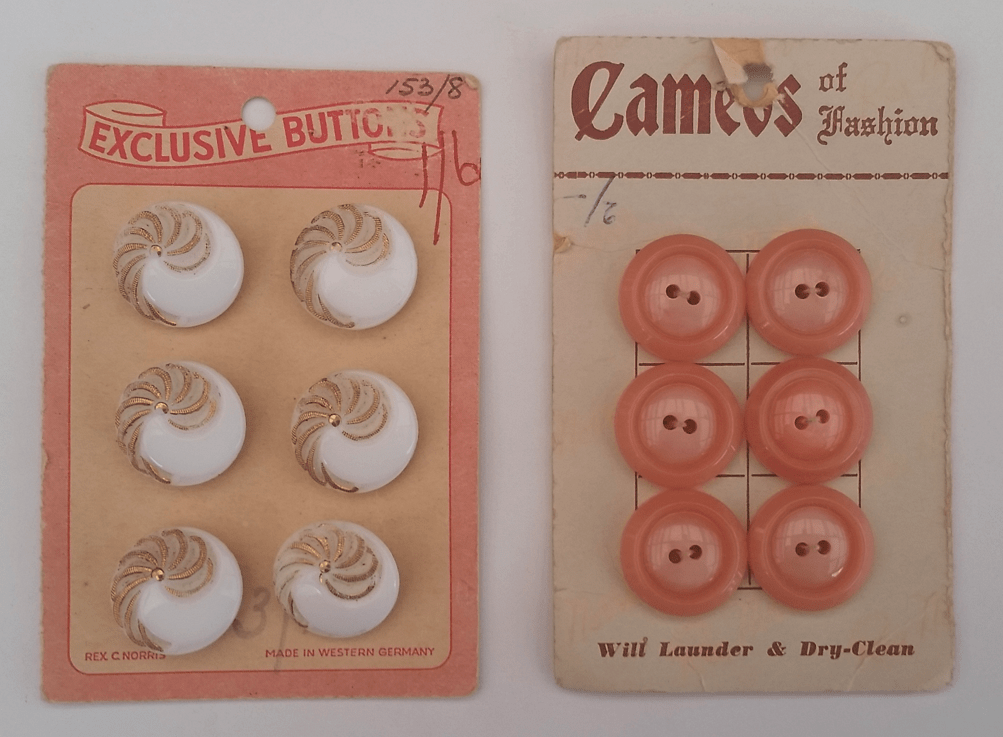
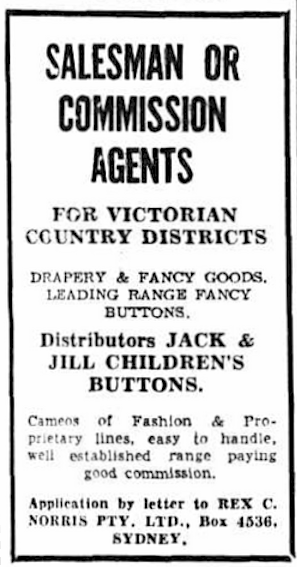
The Age (Melbourne), 8th July 1953 page 21.
